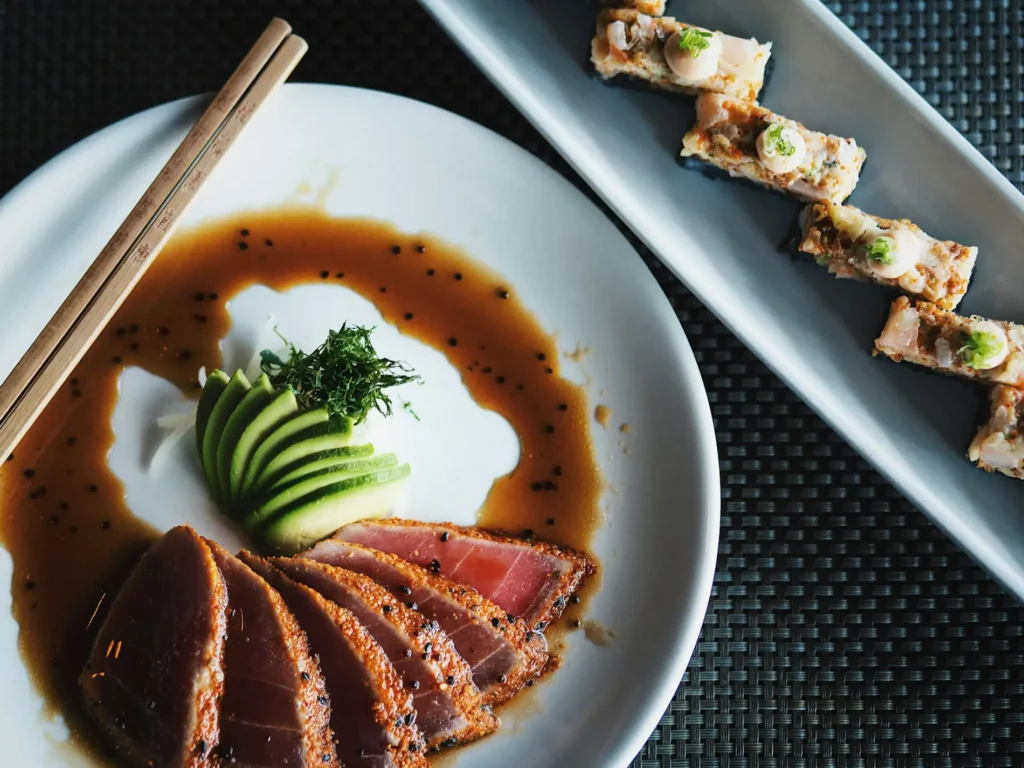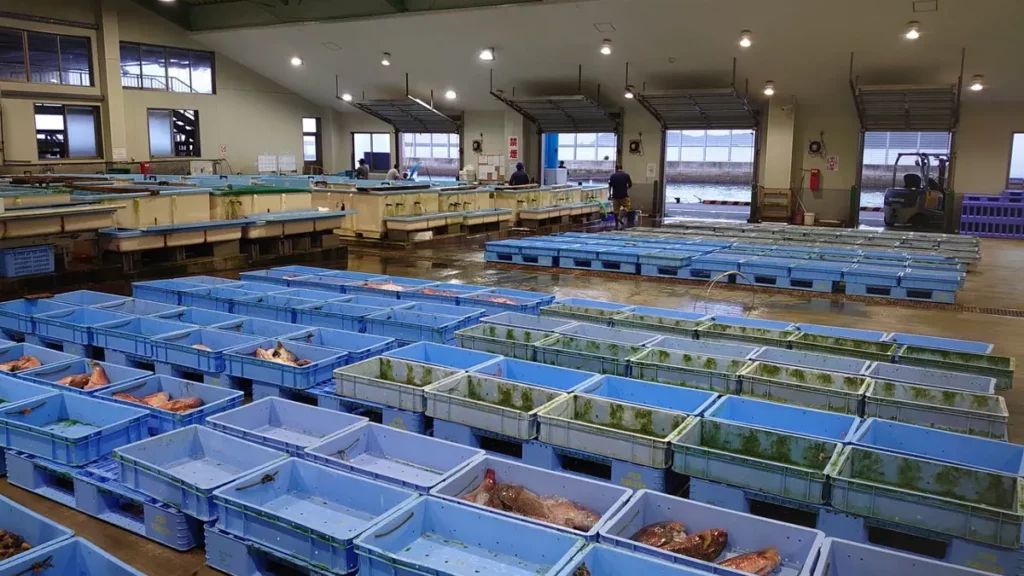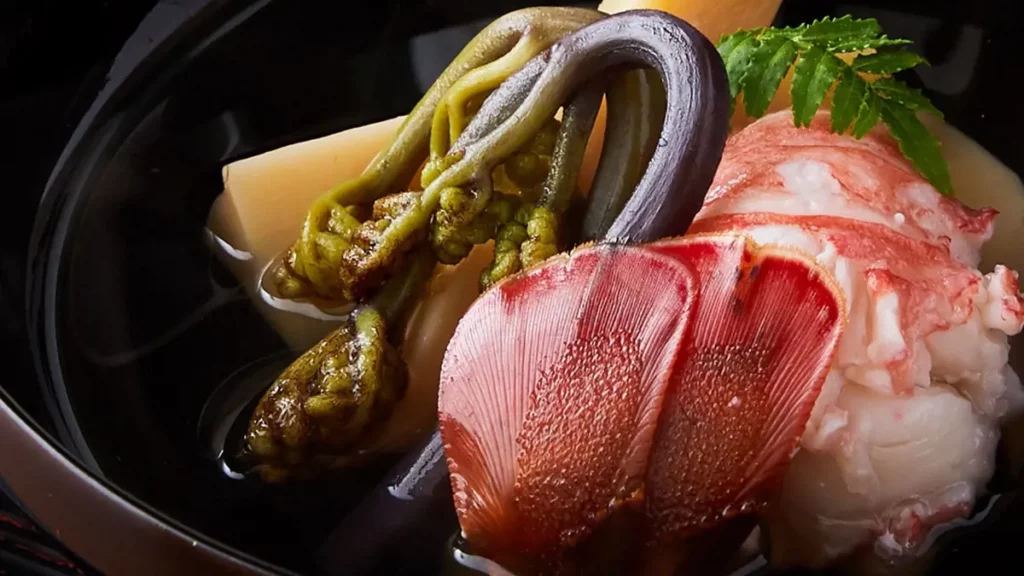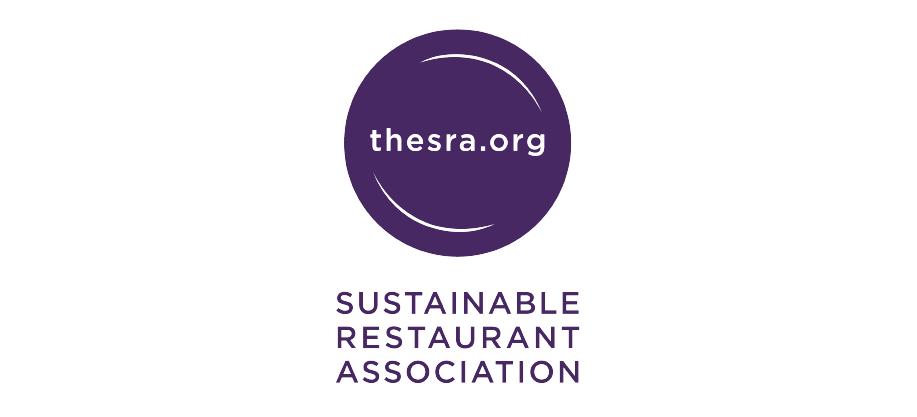It's Time to Take Endangered Seafood Off the Menu
15 October 2024
Share this exclusive content from Saladplate

Photo Credit: The Sustainable Restaurant Association (TSRA)
MOST OF US WOULD BE APPALLED AT THE THOUGHT OF EATING A SUMATRAN TIGER OR A BLACK RHINO, AND YET MANY PEOPLE CONTINUE TO SOURCE, SERVE, ORDER AND EAT SEAFOOD SPECIES THAT ARE IN SIMILAR PERIL. IN RESEARCHING THIS ARTICLE, WE SPOKE TO EXPERTS AND CHEFS ACROSS OUR GLOBAL NETWORK TO ASK WHY THIS IS THE CASE, WHAT SEAFOODS WE SHOULD AVOID AND WHAT ROLE RESTAURANTS CAN PLAY IN RESTORING HEALTHY POPULATIONS BEFORE IT’S TOO LATE.
Over one-third of global fish stocks are overfished (meaning that we’re harvesting fish at too fast a rate for populations to replenish), with some significantly worse than others. Read on to learn which are the most critically endangered and why it’s time to take them off the menu.
What are the worst options when it comes to endangered seafood?
“Wild-caught seafood is quite a complex subject and it’s hard to know what’s a good choice,” says Jack Clarke, Seafood Engagement Manager at the Marine Conservation Society. “We developed the Good Fish Guide over 20 years ago to help people cut through the complexity and make it easier to know which fish to serve and eat.” Here are some of the species that need protection most urgently.
Eel
“European eel is one of the few options that’s an absolute no-go. It’s more endangered than a panda and criminal gangs make over €3 billion each year smuggling it out of Europe,” says Clarke. “Things have got so bad that scientists have issued their sternest advice ever for its continued survival: zero catches, even for restocking, restoration and aquaculture.”
The sharp decline in eel populations worldwide has been driven by a lethal combination of overfishing, habitat loss, pollution, the damming of rivers and the climate crisis. Stocks of baby eels are estimated to have dropped by 95-99% since 1980. Furthermore, as Clarke mentions, eels are a common target for smugglers; driven by dwindling global populations and high demand (particularly in Asian markets), an estimated 100 tonnes of juvenile eels are smuggled out of the EU each year.
Around 5,500 tonnes of farmed eel are currently produced across Europe each year to meet this incessant demand. However, little is understood about the eel’s life cycle, meaning that these operations rely entirely on catching juvenile eels in the wild – only exacerbating the problem.
Eels are on the Red List of Threatened Species managed by the IUCN; European eel is Critically Endangered, while Japanese eel and American eel are both classified as Endangered. Despite there being no sustainable sources of eel left, it’s still a common feature on menus worldwide. “There are some iconic restaurants that still serve eel,” says Clarke. “There are arguments around eating them for their cultural value – but any kind of culture that eats an animal to extinction can’t possibly value it. The one thing we can do to help is to stop eating eels. We need to stop selling them in restaurants.”
Shark
Shark fin soup is consumed by many communities across Asia and is one of the main drivers of the massive decline in shark populations, estimated at 70%. As many as 80 million sharks are killed annually for shark fin soup alone – and that’s not counting those caught for other commercial uses (to be processed as meat, leather or health supplements) or as accidental bycatch. The ‘finning’ method often employed by those on the hunt for shark fins is a particularly cruel practice, with sharks thrown back into the oceans once their fins have been removed and left to die in agony from suffocation, blood loss or predation. Because they have low rates of reproduction, their populations are hit particularly hard by these practices.
Up to 30% of the sharks exploited for their fins are from Endangered species, including the Scalloped Hammerhead and Great Hammerhead. In addition to the damage being done to their own populations, sharks are apex predators and play a critical role within marine ecosystems; without them, the entire food chain is affected. In an effort to save these species from extinction, trade is regulated by CITES – but dried fins from these sharks are still being sold. China is the primary market, with around 50% of the dried fin market brokered through Hong Kong. Shark fin is also consumed in the US.
While shark fin is never an ethical option, Clarke clarifies that not all types of shark are off the table. “There are hundreds of species of sharks. While we wouldn’t recommend you eat most of them, there are a handful of sustainable fisheries for sharks out there – and where there are well-managed sources of seafood, we should support them. Look out for MSC-certified spurdog from the USA. For all other sharks and rays, check the Good Fish Guide.”
Bluefin Tuna
Bluefin tuna is one of the most commercially valuable fish on the planet, and as a result there are ongoing problems with overfishing across the world. All three species of bluefin — Atlantic, Pacific and Southern — have been heavily overfished. Because tuna are migratory and swim thousands of miles across the ocean each year, international regulation is particularly difficult. Tuna is also slow to come to maturity, making it more challenging for stocks to recover.
Pacific bluefin tuna is listed by Marine Conservation Society as a Fish to Avoid. Heavily overfished in the past thanks to an extremely high market value, the species remains at very low levels. Similarly, Southern bluefin tuna – an extremely valuable fish popular for use in sushi and sashimi – was very nearly fished into extinction in the mid-90s, leading to the global listing of the species as Critically Endangered. Southern bluefin was recategorised as Endangered in 2021, reflecting a small degree of recovery, but this is another fish for which there is currently no sustainable source.
“I am concerned about the future of bluefin tuna. With sushi gaining worldwide popularity, the demand for tuna is increasing globally,” says Yuuki Tanaka of Ise Sueyoshi, a kaiseki restaurant in Tokyo. “Despite being an endangered species, the ongoing demand means that even if the population decreases and prices rise, there will still be people willing to buy it. Without regulations to impose limits, this situation could essentially mean a countdown toward extinction.”
There have been tentative signs of increased numbers of Atlantic bluefin tuna in recent years, although there are still no ‘Best Choice’ sources listed by Marine Conservation Society. While this recovery is in the very early stages and demands that we proceed with caution, Clarke points to the story of Atlantic bluefin as proof that we can make real change. “People all over the world worked together for this. They took bluefin off menus. They sat down at boring meetings and agreed to develop rules and stick to them. Now, we’re seeing bluefin tuna along coasts again. People [in the UK] pay good money to catch, tag and release them, and we can land limited numbers to eat and enjoy. That’s cultural value.”
Kyle Connaughton of SingleThread Farms gives us an insight into the bluefin situation in Northern California. “While the fishing of wild bluefin tuna is incredibly problematic, there are several efforts to raise bluefin in a ranched operations that are also restocking wild populations. In certain cases, there is an opportunity to create economic viability for fisheries that are working to reverse the issues with wild stocks; we must, however, watch their work closely.”
Wild-Caught Caviar
As MCS notes in the Good Fish Guide, the value of wild sturgeon caviar is so high that there is a substantial illegal fishing trade, putting these fish in critical danger. In fact, WWF describes sturgeons as the most endangered species group on earth, on the brink of extinction due to habitat loss and overfishing driven by the rampant demand for caviar. “Sturgeons are economically and culturally important in every river basin and country across their traditional range. We are aiming to rebuild their populations by tackling the illegal caviar trade and enhancing the health of river systems.”
Farmed caviar is the only viable choice, as numbers of wild-caught sturgeon are dangerously low. Farmed sturgeon bred in hatcheries, so there is no dependence on wild fish for broodstock. It is worth noting that farming sturgeon is still an inefficient use of resources, as it relies on a high intake of fish meal and oil per gram of protein produced; this comes with its own sustainability problems.
Local Concerns
Connaughton says, “The above are some of the worst examples on a global scale, but it’s also important to consider what’s happening on a local level. In California, we’ve seen a complete depletion of wild abalone due to overfishing and collecting.” He explains the knock-on effect that this has had on the local ecosystem. “It’s led to sea urchins moving into the habitat and destroying the kelp beds. These beds are the home to the otter, the natural predator of the sea urchins.” With the otters displaced, sea urchin populations continue to rise. “While abalone farms are restocking the wild populations, it takes time and effort by them, sea urchin divers and many other people to reverse the multiple issues that have occurred due to the overfishing of one species.”
“It’s very specific to location and even a certain year,” Connaughton continues. “For example, we’re watching local salmon and Dungeness crab very closely, year by year, to really understand what our impact may be. I’m particularly concerned with the future of King crab in Alaska and Hokkaido; that’s something we all need to watch closely.”
In Taiwan, Captain Huang Shih-Yang from Daxi Fishing Harbour is a key figure in local marine sustainability efforts. As a leader of the Marine Waste Fleet, Captain Huang has witnessed firsthand the detrimental effects of modern fishing practices, ocean pollution and the climate crisis. He tells us that traditional species once common in Taiwan – such as red seabream, mackerel and mullet – are becoming increasingly rare.
Other Popular Fish
While they might not (yet) be listed as endangered, it’s important to remember that plenty of the most popular fish are in a constant battle to survive. “I think most people know about things like shark fin and tuna, but a lot of the wild-caught popular fish are really struggling,” says Graham Long, Executive Chef at Hong Kong’s EAST Hotel. “Atlantic cod has been an issue for a long time, and slow-growing species like Atlantic halibut take a long time to replace in the ecosystem.”
Clarke points to the necessity of maintaining complete, up-to-date visibility in your supply chain. “Wild Atlantic halibut is a Critically Endangered animal. It’s red-rated on the Good Fish Guide and should not be eaten. However, farmed Atlantic halibut is an ocean-friendly, green-rated option in the Guide. It’s really important that you know what you’re buying, and where and how it was caught or farmed.”
The climate crisis poses its own concurrent problems. Many Northern fish species are struggling to handle the warming waters, which are increasing the risk of parasites and disease. Fewer fish are surviving into adulthood, and many of the fish caught are juvenile and may not yet have reproduced – meaning fewer fish in the following generation.
This is true of shellfish and crustaceans, too. “They’re suffering not just from overfishing but also pollution and habitat loss,” Long continues. “It’s so important that we do our homework on where stocks are coming from. There has been some good work helping wild stocks and habitats recover, but there is a lot more still to be done.”

Harbour processing of fish. Photo credit: The Sustainable Restaurant Association (TSRA)
Why Are We Still Eating Endangered Fish?
1. Lack of Consumer Education
Much of the problem lies with a lack of information for consumers. As Clarke says, “If your local butcher had a side of rhino hanging from the ceiling, there would be a riot. But wild halibut steaks at the fishmongers? No-one bats an eyelid.”
“The ‘cuddly’ factor leads people to feel much more worried about a tiger or a panda than a fish,” says Long, “but I also don’t think it’s very well covered [in the media] so it’s not at the front of people’s minds. People don’t tend to have much interaction with fish and shellfish unless they’re in the supply or hospitality trade. It just turns up on your plate or neatly packaged in a supermarket.” Masakazu Iwasawa of Pizzeria Gtalia da Filippo in Japan agrees. “There is always a wide range of fresh fish on offer in stores, so it can be hard to imagine that they might include endangered species. For this reason, there is a certain degree of apathy.”
Yuuki shares that there is a lack of awareness among Japanese consumers. “Japan is a country blessed with a rich variety of food ingredients. Because we have consistently enjoyed this abundance, many people lack awareness or concern about food crises or the existence of endangered species. In many cases, people are simply unaware of the critical status of certain species, or they do not actively seek out this information.”
2. Cultural Influences
Food heritage can play a role, too. “In Japan, there is a strong tendency to value tradition and custom, sometimes at the expense of considering environmental sustainability,” Yuuki continues. “We have long-standing food traditions, and businesses often promote these commercially without fully considering the environmental impact.”
He lists one example as Doyo no Ushi Day, or Day of the Ox, when eating eel is a traditional part of celebrations, saying that it’s important to find new ways forward without vilification. “Labelling these practices as inherently ‘bad’ is not constructive. I believe it is essential to maintain respect for businesses that operate based on traditions and culture, while also engaging in ongoing discussions about how to address these issues in light of current environmental conditions.”
3. Lack of Legislation
Closer to the root of the problem is the worrying lack of legislation. Connaughton says, “For me, the big issue is that fisheries are allowed to fish these species and purveyors are allowed to sell them. Once they are on the market, uneducated consumers will buy them. The problem lies on the regulation side; with depleting economic opportunity, fisheries will continue to sell these fish until stocks are beyond repair. This is where regulations are needed, and countries need to come together. If you could buy tiger meat, don’t be so sure some people wouldn’t eat it; restricting access is what is required to make the shift.”
How Can Restaurants Help to Restore Healthy Populations?
One of the prominent advocates for sustainability in Taiwan’s restaurant scene, Chef Chang Wen-Teng of San Shi Zhi Ju says that chefs and restaurateurs must be proactive in choosing seafood that supports healthy, local ecosystems and reduces the strain on overexploited fish populations; this shift in mindset within the industry can serve as a driving force for wider consumer awareness and responsible seafood consumption.
Here are some practical actions you can take to be part of the solution.
1. Take Them Off the Menu
The essential first step is to take all Endangered and Critically Endangered species off the menu. “Animals shouldn’t have to be endangered for us to start asking questions about their sustainability. If we deal with things earlier, we can save ourselves a whole lot of trouble,” says Clarke. “That means only eating seafood from sustainably managed fisheries and farms. At MCS, we encourage restaurants to source seafood rated 1-3 in the Good Fish Guide. This opens up a lot of ocean-friendly options! Check the Guide and see what those options are; you may be surprised what you find.”
While you might not be ready to commit to sourcing only seafood rated 1-3 straight away, it is crucial that you remove all red-rated seafood from your menu. “That’s the very minimum your customers would expect,” says Clarke. “The foodservice sector plays a hugely important role in this. We’re not killjoys denying you delicious treats – we’re trying to get things back on the menu. It just takes time, and it takes co-operation and support from restaurants. Let’s reframe the issue and see sustainability as an avenue for culinary adventure.”
2. Do the Hard Work for Your Customers
For all seafood, be aware that stocks can vary depending on exact species, your location and time of year. It’s imperative that hospitality businesses cultivate transparent supply chains, support only responsible fisheries and rely on certification from expert third-party bodies to guide their sourcing strategies. “We need to be providing accurate knowledge to consumers,” says Masakazu. “To do this, it’s important to build connections with the people in our supply chains, all the way back to the fishermen.”
“People (even me!) don’t want to have to worry about sustainability when they’re eating out,” says Clarke. “It’s a treat and they don’t want to cause a fuss or ask too many questions… but, in 2024, should they need to? Most people wouldn’t feel the need to ask if there will be any endangered animals featuring on the tasting menu. It’s up to businesses and chefs to ask those questions of their suppliers.”
Connaughton agrees. “It’s important that all chefs and all foodservice establishments are educated on the products they serve and the possible harm they may be doing. We must make the right choices and cut off the demand for endangered species. If we all demand better from our suppliers, it will take the pressure off species that are in danger of – or well past the point of – overfishing.”
“It’s important to recognise that extinction is just one issue, and we should focus on the underlying causes,” says Yuuki. “Restaurants need to learn about and consider different fishing methods. For instance, is all net fishing problematic? How much environmental impact does bottom trawling have? If fixed nets were made with larger mesh to avoid catching smaller fish, how much could this prevent ecosystem loss? Understanding the variety of fishing techniques and their specific impacts is key to making informed decisions about the seafood you buy.”
Hsu Cheng-Yu – the General Manager of Rising Ocean, a social enterprise founded in 2007 with the purpose of promoting sustainable fisheries in Taiwan – agrees, stressing the importance of understanding the true source of your seafood. “It’s not enough to assume seafood labelled as ‘fresh from the fishing port’ is sustainably sourced,” he says. “We must be diligent in knowing the production method (wild-caught or farmed), the harvest date (not the packaging or receiving date), the exact species and, ideally, the fishing vessel or farm. Supporting locally produced, legally sourced seafood is one of the most effective ways we can contribute. Complacency is the greatest enemy of sustainability.”
3. Rely On the Experts
The most reliable and straightforward way to ensure sustainability is to check with the experts. Here are some of the best resources you can use for checking the sustainability of the seafood you buy:
- The most recognisable certification for wild-caught fish is probably the Marine Stewardship Council’s blue tick/chain of custody certification.
- Mentioned previously, the UK-based Marine Conservation Society’s ‘Good Fish Guide’ also covers international waters. In addition to an extensive database of fish varieties, it’ll give you an instant overview of how your sources stack up and suggest more sustainable alternatives. There’s also an app available.
- In the US, Monterey Seafood Watch is a fantastic resource.
- WWF has a range of country-specific guides, covering Portugal, Italy, South Africa, Indonesia and more, although these aren’t available for every country.
- Expanding throughout Latin America, Pesca Con Futuro has created a detailed map of sustainable local species.
- In South Africa, look for the Southern Africa Sustainable Seafood Initiative (SASSI).
- In Australia, check goodfish.org.au.
This can also include local solutions. For example, in Taiwan, Daxi Fishing Harbour has partnered with the Ocean Foundation to promote the Ocean Heart Certification, a sustainability initiative that began with sakura shrimp. This certification is based on three core principles: ensuring sustainable stocks, protecting the marine environment and implementing effective fisheries management. By emphasising corporate social responsibility alongside these principles, the certification provides localised guidance for choosing sustainable seafood options.
4. Put More Diversity On The Plate
As Long says, “One of the things we can do is champion the use of lesser-known species that are less at risk – a lot of which are delicious, but not exactly household names! In general, people are nervous about ordering something they don’t know, but it’s down to the hospitality industry to provide explanation. For example, pollock is a great substitute for cod, but many people might not know that.”
Chef Chang advises restaurateurs to prioritise locally sourced, resilient fish species over imported or endangered varieties and to support local fishing communities that are working toward sustainable practices.
5. Look To The Future
Cultivated meat could provide a sustainable way to source endangered seafood in the not-too-distant future. Forsea Foods, a company that produces cultivated alternatives to high-value seafood, is currently working on eel meat generated from stem cells, planning to get products on shelves by 2026 in target markets of Europe and Japan. Meanwhile, other companies are exploring cultivated alternatives to bluefin tuna. While consumer appetite for cultivated meat options has yet to be fully explored, we are fast approaching a future where restaurants may be able to feature species on menus without negatively impacting their populations.
6. Educate Your Team and Your Diners
Chef Chang Wen-Teng is clear that restaurants have a responsibility to promote sustainable seafood consumption and to educate consumers about the sustainability of the seafood they serve. Connaughton agrees, saying, “We have to use our platforms and teach our guests and our staff.” Clarke suggests that restaurants encourage staff to sign up to the Marine Conservation Society School of Fish resource. “It covers all the basics of sourcing seafood in simple steps. Go through your menu and check all your seafood on the Good Fish Guide. Talk to your supplier if you can’t find enough details, or get in touch with us if you’d like help working out a plan.”

Seafood dish at Ise Sueyoshi.
Photo credit:Yuuki Tanaka
Waliki Coffee, Bolivia.
Photo credit: Ozone Coffee

FEAST restaurant at EAST Hotel, Hong Kong.
Photo credit: The Sustainable Restaurant Association (TSRA)

Source: The Sustainable Restaurant Association



